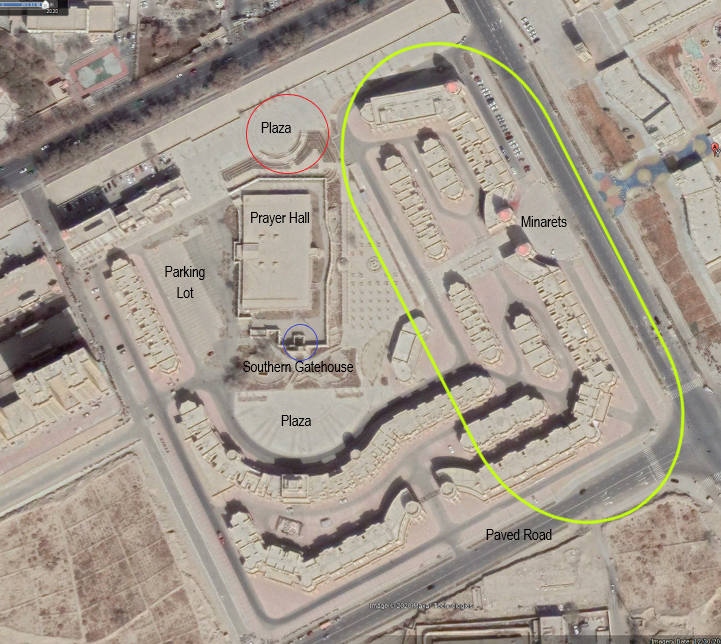Ach
ja, het schijnt tegenwoordig de taak van de reguliere media te zijn
om haat en angst te zaaien tegen resp. voor landen als China en Rusland, waar deze media doodstil blijven over de enorme oorlogsmisdaden van de VS dat een
geschiedenis heeft van het opzetten van opstanden, economische
sancties (misdaden tegen de menselijkheid), geheime militaire acties
o.l.v. de CIA en uiteindelijk als er geen andere mogelijkheid is een
illegale militaire inval en dat alles in landen die de VS niet
welgevallig zijn.....
Bewijzen
aangaande deze VS terreur te over, echter de reguliere westerse media
doen net of de neus bloedt en verdedigen de vreselijke terreur die de
VS op zoveel volkeren heeft doen neerdalen en grootschalige terreur
die het nog steeds uitoefent op meerdere volkeren......
In het volgende artikel wordt het doorprikken de anti-Chinese propaganda betreffende de Keriya Aitica moskee wat meer uitgebreid besproken, inclusief satellietfoto's. Het artikel werd geschreven door Sun Feiyang en werd eerder gepubliceerd op Geopolitics ALERT:
Western
Media Bias: The Case of the Keriya Aitica Mosque
By:
Sun Feiyang On:
July 7, 2020

Chicago (MD) – One year ago there was a rash of articles in the media with the same claim — that China had been on a massive, targeted campaign to destroy mosques in Xinjiang. The evidence? Google Earth satellite images, supplemented with the active imaginations of some dilettante ‘experts’ on Twitter.
Many
of these claims were later walked back to “partial demolition”.
In the case of Keriya Aitika Mosque, Shawn
Zhang clarified weeks later that this “mosque” was actually a
recently built gatehouse that had been removed, and that the
800-year-old mosque itself was intact (and much larger than the image
he showed). Of course, the mosque-demolition narrative had already
taken on a life of its own as major news outlets began to pick up on
the story, many of which disregarded Shawn’s own admission that he
was mistaken.
After these images were used as positive evidence to denounce the PRC for religious repression, they and the story of the Keriya Aitika Mosque largely faded from public view.
The media moved on to new sensational claims about Xinjiang, shifting gears every few weeks in search of something that would stick. Given the lack of follow-up, I thought I would revisit the Keriya Aitika Mosque situation myself to provide an update. Readers are encouraged to follow along on Google Earth — the coordinates for the mosque are 36°51’08.75″ N, 81°40’18.08″E.Below is one of the images of Keriya Aitika from May 2017, before the northern gatehouse was removed. You may notice that there’s not much surrounding the mosque itself — the land on the south and east sides is basically empty.

Fast
forward to April 2019, when we started to see these claims being
made. The northern gatehouse has been removed and there appears to be
just an empty spot where it once stood. This is the image generally
used as “proof”.


April 2019 Google Earth imageUnderstandably the above image looks incriminating — are they in the process of demolishing all of it? Why does it look so barren in front of the mosque? But lost in the focus on the northern gatehouse is everything else going on -the new construction of buildings to the south and east as well as the expansion of roads around the mosque.
When we come back to Keriya Aitika Mosque in March 2020 though, everything has taken shape. The area to the north is a circular plaza with steps leading to the prayer hall. The southern gatehouse overlooks a new plaza and has been connected to a wall that extends around the mosque. The buildings to the east have sets of minarets, which certain media outlets even claimed were banned in Xinjiang. There’s even a parking lot to the west of the mosque for worshipers commuting from further away.


March 2020 Google
Earth image
Were the above image put side by side with the May 2017 image, it’s unlikely that anyone would draw the conclusion that the Keriya Aitika Mosque was being targeted for demolition. The use of satellite imagery is massively misleading — renovation and construction can easily look like destruction. It’s no surprise that this narrative disappeared soon after — it would not support their story for people to go on Google Earth today and see for themselves.
I encourage readers to apply a level of skepticism to claims the Western media makes about Xinjiang. The speed at which narratives are built and then discarded, as well as their type, point to something that remains persistent: not earnest reporting of the facts, but a political purpose. Going back to claims made a year ago leads us to conclusions radically different, even opposite, from the original reporting, as we can see with the case of the Keriya Aitika Mosque.
This post was originally written by Sun Feiyang and was posted to Medium. It appears here with permission.
Image:
Image: Flickr – Malcolm
Brown
